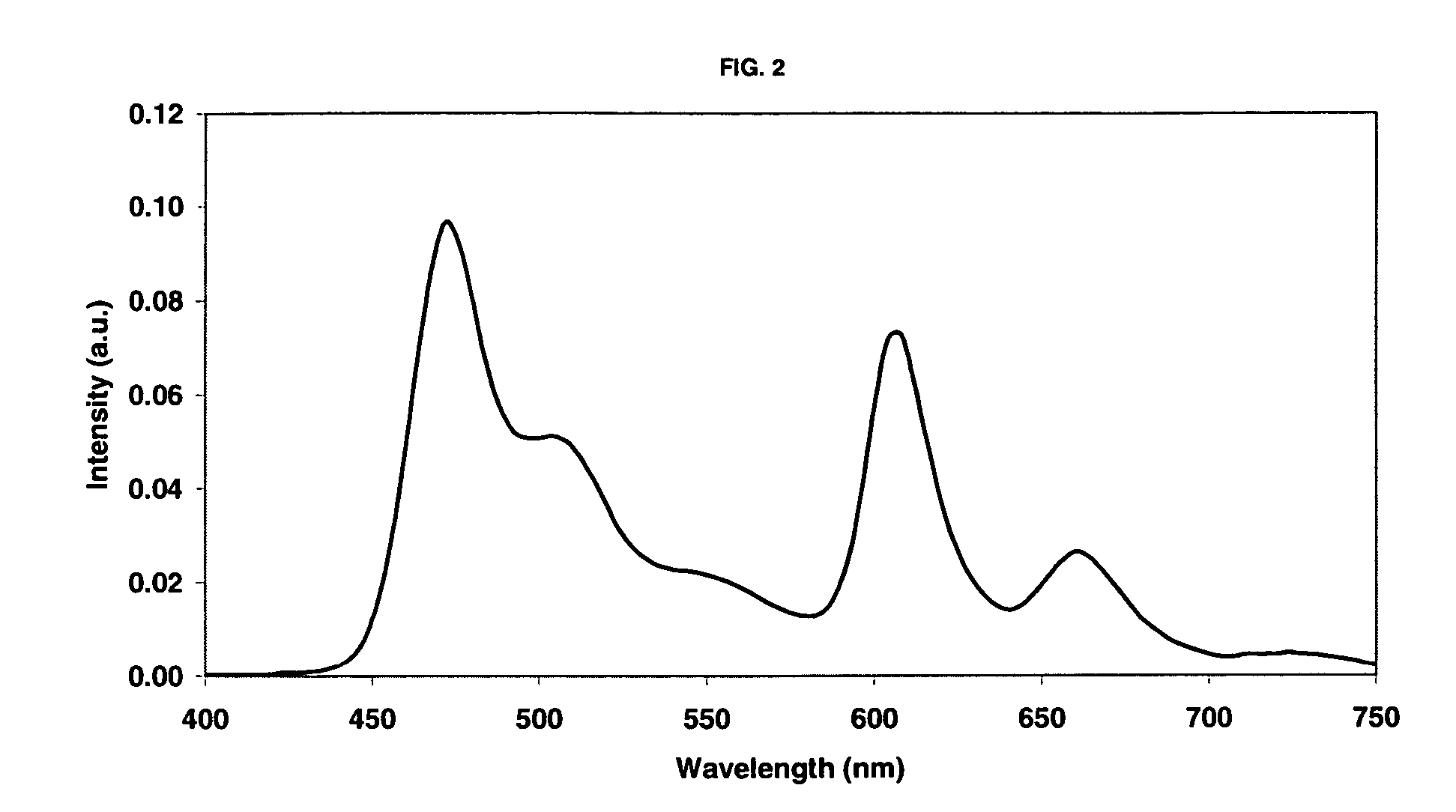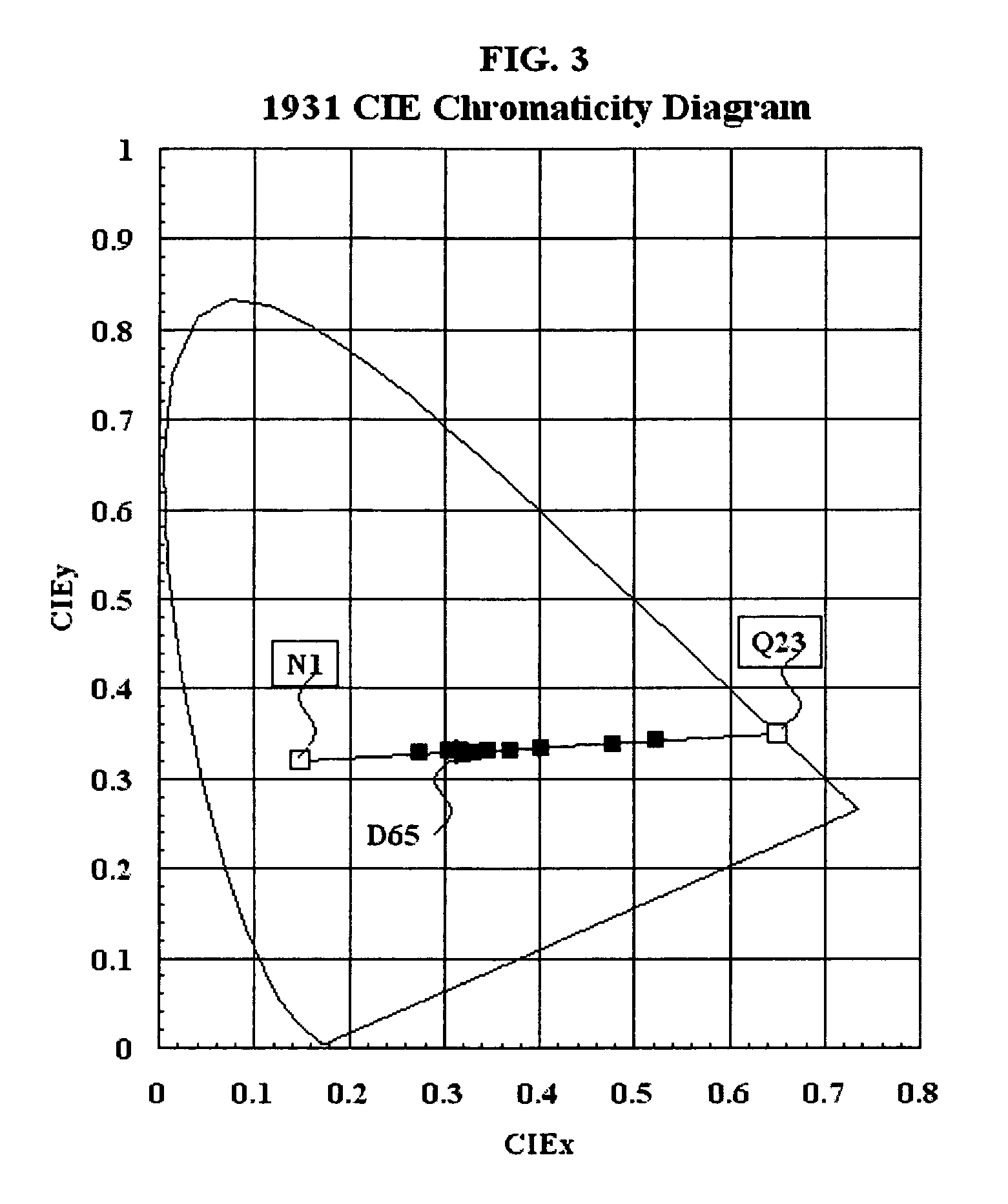Selecting white point for OLED devices
a technology of organic light and diodes, which is applied in the direction of discharge tube luminescnet screens, other domestic articles, natural mineral layered products, etc., can solve the problems of improving power consumption relative to an rgb constructed of similar materials, and achieves effective initial white color, improved device efficiency, and reduced power consumption
- Summary
- Abstract
- Description
- Claims
- Application Information
AI Technical Summary
Benefits of technology
Problems solved by technology
Method used
Image
Examples
examples
[0165] The invention and its advantages can be better appreciated by the following inventive and comparative examples. In the following, mixed compositions are described in terms of percentages or ratios by volume, as are commonly used in the art.
examples 1 to 8
[0166] Examples 1 to 8 were prepared using a red-orange emitting layer using NPB host with Rubrene co-host and a red-orange dopant of Formula Q23. The blue-green emitting layer includes 9-(1-naphthyl)-10-(biphenyl-4-yl)anthracene (TBADN) host (as host) with 2.5% 4-(di-p-tolylamino)-4′-[(di-p-tolylamino)styryl]stilbene (Formula N1) (as dopant) and 6.4% NPB as co-dopant.
example 1
[0167] A comparative OLED device was constructed in the following manner:
[0168] 1. A clean glass substrate was vacuum-deposited with indium tin oxide (ITO) to form a transparent electrode of 85 nm thickness;
[0169] 2. The above-prepared ITO surface was treated with a plasma oxygen etch, followed by plasma deposition of a 0.5 nm layer of a fluorocarbon polymer (CFx) as described in U.S. Pat. No. 6,208,075;
[0170] 3. The above-prepared substrate was further treated by vacuum-depositing a 240 nm layer of 4,4′-bis[N-(1-naphthyl)-N-phenylamino]biphenyl (NPB) as a hole-transporting layer (HTL);
[0171] 4. A 28 nm layer of NPB (as host) with 28% Rubrene and 0.4% red-orange emitting dopant as shown in Formula Q23 were deposited on to the HTL layer to form a red-orange emitting first light-emitting layer;
[0172] 5. A coating of 47 nm of 9-(1-naphthyl)-10-(biphenyl-4-yl)anthracene (TBADN) host with 2.5% 4-(di-p-tolylamino)-4′-[(di-p-tolylaamino)styryl]stilbene (Formula N1) (as dopant) and 6.4...
PUM
 Login to View More
Login to View More Abstract
Description
Claims
Application Information
 Login to View More
Login to View More - R&D
- Intellectual Property
- Life Sciences
- Materials
- Tech Scout
- Unparalleled Data Quality
- Higher Quality Content
- 60% Fewer Hallucinations
Browse by: Latest US Patents, China's latest patents, Technical Efficacy Thesaurus, Application Domain, Technology Topic, Popular Technical Reports.
© 2025 PatSnap. All rights reserved.Legal|Privacy policy|Modern Slavery Act Transparency Statement|Sitemap|About US| Contact US: help@patsnap.com



